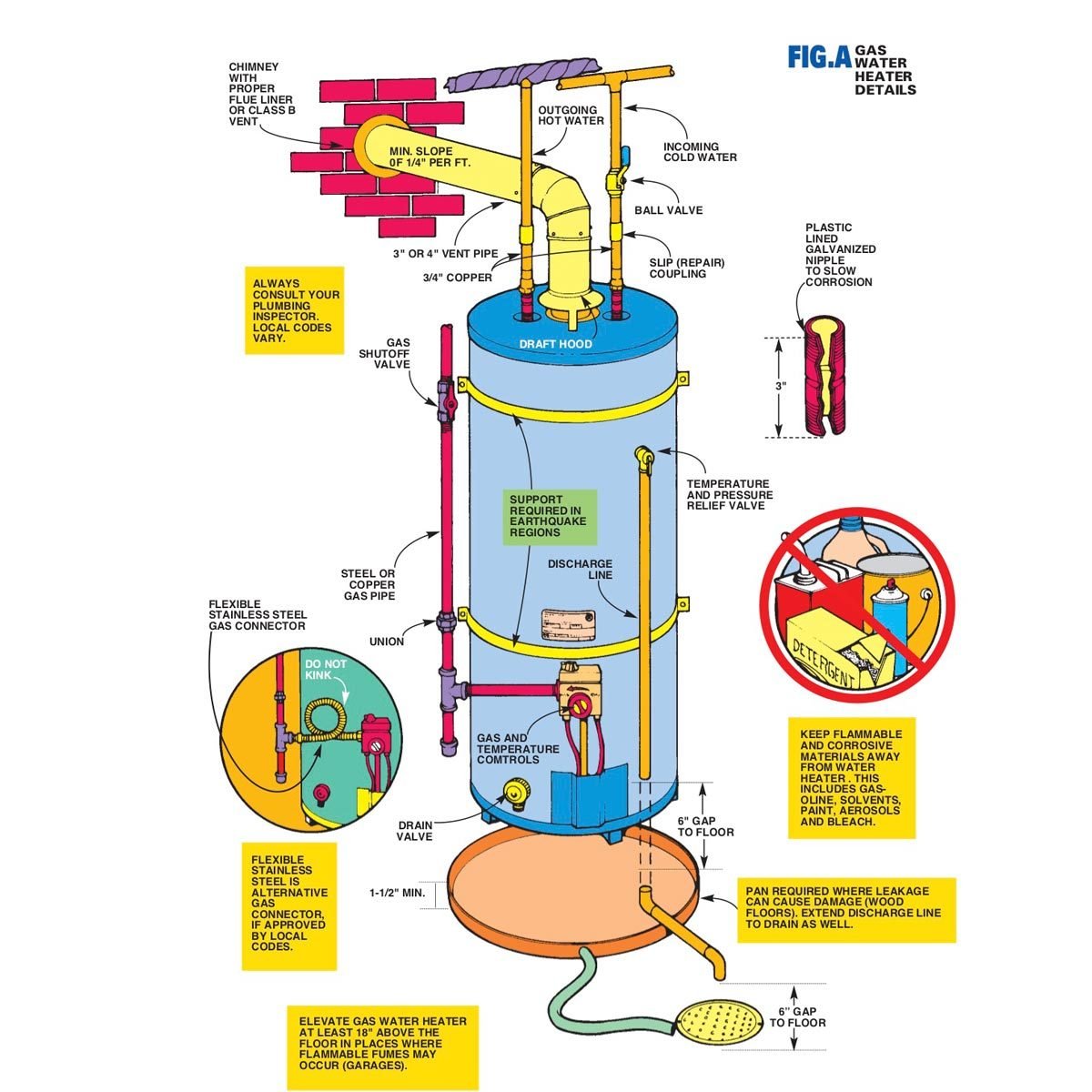Getting Started Installing Your New Hot Water Tank
We’re replacing a natural gas water heater in our demonstration. The steps for replacing a propane water heater are exactly the same, and those for an electric water heater are similar.
In any case, when you’re planning a water heater replacement, play it safe. Call your local department of inspections and ask if you need a permit. And make sure a plumbing or electrical inspector checks your work.
When to get a new water heater
Your water heater is dead when the tank leaks. The telltale sign that your water heater needs replacing is a slow drip underneath, usually showing up as a trail of rusty water. This means that the steel tank has rusted through and can’t be fixed. Other symptoms, such as insufficient or no hot water, usually signal other problems that you can fix.
If you spot a drip, plan to replace the water heater right away. Don’t wait until the leak gets bad. Most residential water heaters cost $150 to $400 for either gas or electric, plus $200 to $450 if you have a plumber install it. More expensive gas water heaters with special venting systems also are available. But they’re more difficult to install, and we won’t deal with them here.
New water heaters come with installation instructions and lots of warnings to make sure you handle the gas, electrical and other connections safely. In this article, we’ll supplement those basics with techniques and “real world” advice from several professional plumbers.
But take heed: You’ll be working with natural gas, propane or electricity, all of which are hazardous. If you don’t feel confident, call in a pro to take care of the tough parts. And have your work inspected when it’s done.
Plumbing codes vary by region. Describe your planned installation to your local plumbing inspector, including the types of materials you intend to use for your new connections. Better to get guidance first so you don’t have to change things later!
Figure A: Gas Water Heater Details

To print out this image, see the Additional Info at the end of this article.
Figure B: Connections for Steel and Plastic Pipe

Many homes have galvanized steel or plastic (CPVC) water supply pipes. Galvanized steel pipes are difficult to replace. We recommend that you remove the pipes back to the nearest tee, screw on a plastic-lined galvanized nipple and complete the connections with copper as shown in our photo series.
Because of potential heat buildup, keep plastic pipe at least 6 in. away from the vent and tank. Make a transition from plastic to copper with a special coupling that’s available wherever CPVC is sold.
Flexible copper connectors are easier to install than solid copper, especially when the existing pipes and the tank inlets don’t line up. But not all local codes allow them. If yours does, take special care not to pinch or kink them. You could get a leak.
Shut off the gas and water

Turn off the gas to the water heater by turning the nearby shutoff valve a quarter turn. When off, the handle should be at a right angle to the pipe. Shut off the main water supply as well and drain the lines by opening a faucet on the lowest floor. Water Heater Maintenance: Extend Your Hot Water Heater Lifespan
Article source here: DIY Water Heater Installation


No comments:
Post a Comment